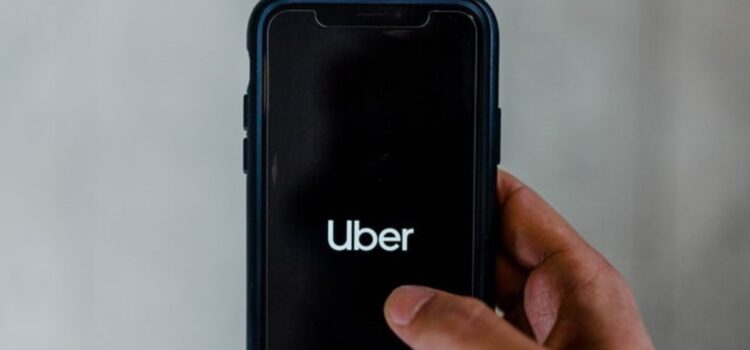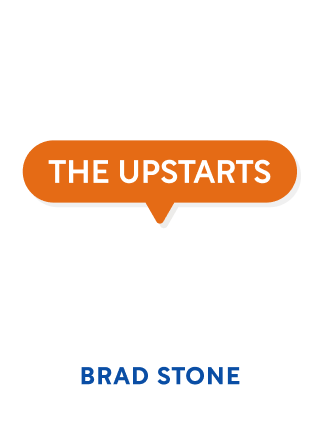

This article is an excerpt from the Shortform book guide to "The Upstarts" by Brad Stone. Shortform has the world's best summaries and analyses of books you should be reading.
Like this article? Sign up for a free trial here .
What is the history of Uber? How did the company grow from a small side project into the international ride-hailing empire?
The history of Uber dates back to November 2008, when Garrett Camp registers UberCab as an LLC in California. A month later, Camp meets Travis Kalanick, who ends up moving to SF from Chicago to run Uber as its co-founding CEO.
Read about the history of Uber from 2007 to 2016.
2007-2016: The History of Uber
Uber has completely revolutionized the whole ride-hailing experience and disrupted the taxi industry. Here is the history of Uber from 2007 to 2016.
2007-2009: From Conception to Inception
May 2007: eBay acquires Garrett Camp’s StumbleUpon. He starts living large and running into frictions with taxis in SF. He tries workarounds like calling multiple dispatchers at once, keeping a rolodex of gypsy cabs, and renting town cars for the entire night. He becomes enamored with a scene from a Bond film where Bond tracks a car coming to him on a phone.
Summer 2008: Apple announces the iPhone and the app store.
August 2008: Camp registers ubercab.com
November 17, 2008: Camp registers UberCab as an LLC in California. He starts doing market research on cabs and chauffeured transportation. His original plan is to buy five Mercedes and share the cost with friends.
December 2008: Camp meets with engineer Oscar Salazar, a friend from grad school, who signs as first engineer. Soon after, Camp meets with Travis Kalanick at LeWeb in Paris. Kalanick argues that instead of centrally owning cars, UberCab should distribute the app to drivers who own their own cars.
Early 2009: Uber is gestating slowly. Camp and Kalanick still see it as a side project. StumbleUpon is spun out of eBay, and Camp becomes CEO again.
- The early version of Uber used SMS dispatch. They enlist the help of a GPS company.
Fall 2009: Uber has a working prototype. It’s buggy and barely works.
2010: Uber Gets Traction
Jan 5, 2010: Kalanick tweets about hiring a “entrepreneurial product mgr/biz-dev killer” and GE employee Ryan Graves replies. Two weeks later, he moves to SF from Chicago to run Uber as its first CEO. Kalanick is now spending about 20 hours/week and listed as a “mega-adviser”.
June 2010: UberCab goes live in iOS. They get rejected by most investors, including 150 investors on AngelList. They raise $1.3MM at $5.3MM valuation.
October 2010: state and SF government officials give Uber a cease-and-desist, threatening penalties of $5,000 per ride and 90 days in jail for each day the company remained operating.
- This fight is the impetus for Kalanick to join Uber full-time, recalling his legal fights at Red Swoosh (a peer-to-peer file-sharing company). He negotiates a 23% stake in Uber for joining.
- Ultimately government officials agree with Uber’s claim that it was merely an intermediary between drivers and riders, not an actual fleet operator (much like Kayak is not an airline).
2011: Uber Expands
Early 2011: Uber launches its first expansion outside SF in NYC, headed by Mike Kochman.
Jul 2011: Uber expands to Seattle, headed by Austin Geidt and Ryan Graves.
- They continue developing their city playbook in a Google doc, consisting of their manager structure and strategies to recruit drivers through Yelp and airport waiting lots.
- Kalanick continues tracking daily results from each market and comparing to the early SF growth patterns. The general manager is tasked with growing faster than SF did.
Oct 2011: After Kalanick’s early resistance, Uber registers as a base in NYC to placate the government.
- NYC is still lacking on the supply side of drivers, so they start a new strategy breaking up the city into micro-cities like Wall St and SoHo. They then manually send drivers to places where demand is highest. This ensures a better user experience, which improves word-of-mouth
Sept 2011: Uber gets $9 million in fares, keeping $1.8 million in commissions. 9000 customers are using the app, with 80% in SF. Uber sets out to raise money.
- Kalanick’s favorite is Andreessen Horowitz, who initially offers a $300MM valuation. But A16Z later lowers the offer to $220MM and asks for a large option pool.
- Kalanick instead goes to Shervin Pishevar at Menlo Ventures, offering $25MM at $290MM. Pishevar doesn’t even ask for a board seat, citing its immense growth (3.5 rides per month per user, and each user showing the app to 7 friends).
- Travis gets advice that “you don’t need validation from a venture capitalist – now it’s about getting the cheapest capital you can.” He goes with Pishevar, who also ropes in celebrity friends like Ashton Kutcher, Britney Spears, Jay Z.
Throughout 2010-11: Chris Sacca employs his strategy of buying shares from other investors, as he did with Twitter. Kalanick refuses to authorize these sales.
- Sacca then unwittingly signs a contract that took away some board rights from First Round Capital. WIth tension in the air, he intimates that he may have to sue Uber. Their relationship sours and Sacca is banned from Uber board meetings – they have yet to reconcile.
New Year’s 2011: After experimenting with manual surge pricing (where Travis would manually plug in new fares into software), Uber unveils an automated surge pricing algorithm. Prices rise up to 7x the normal rate in NYC and SF, causing $100 rides for short rides.
- Travis responds defensively, tweeting “the price is right there before you request.” This feeds the press fire.
2012: Competition and Legal Troubles
Early 2012: Uber is in a dozen cities with 50 employees, half in the field.
Jan 13, 2012: DC officials declare Uber illegal. They organize a press conference, order an Uber, fine the driver, and impound the car.
- DC business is growing by 30-40% each month, hitting $7 million in gross bookings by April.
2012: Michael Pao, general manager in Boston, A/B tests surge pricing with drivers. He shows that drivers with higher fares stayed online longer during peak times, possibly increasing driver supply by 80% and lowering unfulfilled requests by 60%. This convinces Travis to roll out surge pricing universally and at all times.
March 29, 2012: Hailo, a taxi hailing app, raises $17MM and announces plans to launch to Uber strongholds – Chicago, Boston, New York. Uber goes on the offense.
- Some Uber employees question bringing taxis on Uber and diluting the luxury brand of Uber. “I’m going to literally flip this table if anyone says one more time they are worried about destroying the brand. The luxury of Uber is about time and convenience. It’s not about the car.”
April 18, 2012: Uber launches Uber Taxi, beating Hailo by 5 months.
July 4, 2012: Uber launches UberSUV and UberX, originally a fleet of hybrids. UberX is envisioned as employing professional drivers with taxi licenses.
- The name UberX is actually a placeholder, the best they could come up with at the time.
Jul 10, 2012: DC proposes a compromise, legally allowing Uber to operate but adding a price floor requiring Uber to charge several times the rate of a cab. Kalanick believes a price floor is a non-starter, especially as competitors like Hailo are going to require price cuts.
- He starts the now-famous strategy of mobilizing the consumer base to contact the city council, accusing them of “price fixing” and protecting a corrupt industry. He publishes the phone numbers, email addresses, and Twitter handles of council members.
- WIthin 24 hours, the DC council members receive 50,000 emails and 37,000 tweets. They back down on the compromise.
Fall 2012: Uber has >100 employees, moves into new offices at 405 Howard St, and has a $100MM revenue run rate.
Fall 2012: California sends cease-and-desist letters to Lyft and Sidecar.
Dec 4, 2012: In DC, an amendment masses allowing a new class of sedans that could be dispatched by smartphone and could charge by time and distance – a pure victory for Uber, and a revolution for their approach to legislators. “Our product is so superior to the status quo that if we give people the opportunity to try it, in any place in the world where government has to be at least somewhat responsive to the people, they will demand it and defend its right to exist.”
2013-2016: Uber Marches On, With Continuing Controversy
Jan 2013: California reaches an agreement with Lyft and Sidecar, requiring basic safety requirements, insurance, and background checks. Both expand quickly into new cities.
- Quickly, Uber signs the same agreement with California, turning UberX into a ridesharing service. They cover drivers with a million-dollar liability policy, held by a subsidiary called Rasier – German for “shave” (a jab at the Lyft mustache).
Fall 2013: Uber is growing 20% each month. UberX is 25% less expensive than taxis, and Uber Black and Uber SUV are subsidizing UberX. They move to new offices in 706 Mission St.
Aug 2013: Kalanick looks to raise more money from a partner who can amplify Uber’s global expansion. Google impresses him with a self-driving car demo and Larry Page’s promise to work together on Google Maps. Uber raises $258MM from Google and $88MM from TPG Capital (whose partner could help with regulatory problems).
- Jay Z invests $2MM, but wants a larger stake and wires Uber $5MM. Uber returns the difference.
Dec 2013: Uber is sued in California and Massachusetts for misclassification of contractors (they should be employees, plaintiffs argue).
Dec 31 2013: an Uber driver hits and kills a 6-year-old girl walking across the sidewalk. Press is negative. Uber initially defends, saying the driver wasn’t on a ride at the time. This prompts Uber and Lyft to introduce $100k in supplementary insurance for when drivers don’t have passengers.
Beginning of 2014: Uber has booked 200 million rides.
Jan 24 2014: Israeli startup Gett reports that Uber employees ordered and canceled >100 of its cars and texted drivers to switch to Uber.
Early 2014: Uber cuts UberX fares by up to 30% in select markets, hoping to boost demand during the winter slowdown and grow past Lyft.
Spring 2014: Uber begins financing leases for new cars for drivers. A % of driver earnings go toward paying off the lease. This brings more drivers into supply, and it also cements loyalty for Uber.
2014: Lyft representatives approach Uber about merging. It is the first merger proposal in the history of Uber, but the deal falls apart.
Jun 2014: Uber raises a $1.4B Series D at $18B valuation (up from $3.5B in Aug 2013) from Fidelity, Wellington, Blackrock, and Kleiner Perkins.
June 11 2014: London taxi drivers gridlock the city, protesting Uber. Ironically, Uber reports signups jumped 850% after the strike, a classic Streisand effect.
Summer 2014: Lyft COO VanderZanden, disillusioned with Lyft’s prospects, approaches Lyft board members about taking over as CEO and talks to Uber privately about merging. He resigns and joins Uber a few weeks later.
Summer 2014: Uber moves headquarters again (7th time since founding) to a former Bank of America building on Market St.
Fall 2014: Google informs Kalanick that Google was planning to roll out its driverless cars in its own on-demand service. Worried about overreliance on a partner (as IBM relied on Microsoft and Yahoo relied on Google), Uber asks Google board members and observers to stop attending. Uber starts planning its own self-driving research.
June 2015: NYC proposes a bill to limit the growth of Uber/Lyft drivers by 1% a month. This would cripple their growth.
- Uber launches a popular support campaign including mailings, robocalls, TV ads featuring minorities saying they’d lose their Uber jobs, and a feature called “De Blasio’s Uber” that showed a 25-minute pickup.
- The bill is dropped.
Summer 2015: Uber’s Paris offices are raided and drivers fined; Milan outlaws UberPop (EU version of UberX). Cities Spain, Germany eventually also become hostile to Uber.
Beginning of 2016: Uber has booked 1 billion rides. 6 months later, it books 2 billion rides.
June 2016: Uber raises $3.5B from Saudi Arabia, at $68B valuation.
End of 2016: Uber is in 450 major cities around the world.
The History of Uber: Final Words
The history of Uber is a story of a disruptive start-up that has grown from an unassuming side project into a billion-dollar enterprise. The company has transformed the whole taxi industry and created a brand new experience for ride-hailers. That said, Uber founders struggled against a number of major setbacks that were threatening to obliterate the entire venture. To sum up the history of Uber, it was a journey of unyielding determination and relentless persistence.

———End of Preview———
Like what you just read? Read the rest of the world's best book summary and analysis of Brad Stone's "The Upstarts" at Shortform .
Here's what you'll find in our full The Upstarts summary :
- How Airbnb and Uber started as side projects before becoming the giants they are now
- How virality helped both Uber and Airbnb grow
- Why circumventing local laws was essential to growth






